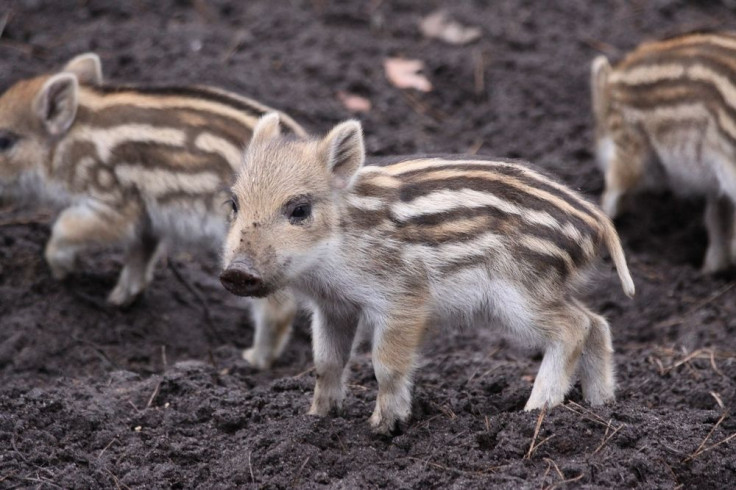Glow-In-The-Dark Piglets And The Future Of Genetic Therapy

In spite of a meager economic growth, a botched Obamacare rollout, and a two-and-a-half week government shutdown that slashed funding for some of our most important agencies, there is a case to be made that 2013 was a pretty solid year. The reason is to be found at the University of Hawaii-Manoa, where an extensive research effort recently culminated in a new landmark for genetic engineering. We’re talking, of course, about glow-in-the-dark piglets.
There’s no reason to panic: glow-in-the-dark piglets only differ from regular piglets insofar as they emit a green hue under a UV-A light. Their vaguely Frankensteinian vibe notwithstanding, each of the 10 subjects will be totally fine, as their values indicate a healthy genetic profile and a normal life expectancy. And while a healthy farrow of fluorescent piglets is a breakthrough in its own right, the underlying technique will help researchers and pharmaceutical companies launch a new generation of cheap, gene-based therapies.
Pigs Aglow
The green hue is actually the result of a fluorescent protein derived from jellyfish DNA. According to Stefan Moisyadi, one of the developers behind the technique, the process involves injecting pig embryos with so-called plasmids that carry the glow-in-the-dark gene. Incredibly, this gene is then integrated into the pig’s overall genetic blueprint. “The green is only a marker to show that it’s working easily,” Moisyadi explained. “It’s just a marker to show that we can take a gene that was not originally present in the animal and now exists in it.”
The technique, developed by Moisyadi’s lab and applied by researchers at South China Agricultural University, shows that genetic engineering is not necessarily a wholly artificial process. With the help of modern technology, gene transfer can now take place across species, allowing scientists to isolate beneficial genes in nature rather than approximating them in expensive labs. For people with at-risk genetic profiles or heritable diseases, this is great news.
For example, the technique stands to transform the treatment of hemophilia –– a bleeding disorder in which the blood does not coagulate properly. "[For] patients who suffer from hemophilia and they need the blood-clotting enzymes in their blood, we can make those enzymes a lot cheaper in animals rather than a factory that will cost millions of dollars to build," Moisyadi explained.
Understanding Genetic Modificiation
The research effort exemplifies the emergence of new, efficient methods of evaluating the success of genetic intervention. Most of these studies originate in the work of Osamu Shimomura, Martin Chalfie, and Roger Tsien, who shared the 2008 Nobel Prize in chemistry for their discovery and development of the jellyfish gene, green fluorescent protein (GFP). Using this research, scientists from all over the world have been able to breed a sizable menagerie of glow-in-the-dark critters, including bunnies, cats, and sheep.
“GFP has been revolutionary to cell biology, and it is really exciting to see this area recognized," Sean Sweeney, a researcher at the University of York, told National Geographic in 2008. “Previously the only way to study the developmental fate of cells was to be invasive –– label cells with a dye and look at the dead, labeled tissue with a microscope. Now we can label them genetically with GFP and look at cells live, over time."
In other words, these studies show that, in 2013, gene modification is not only easier, but also more immediate. It is a type of scientific intervention that can yield clear, visible results. For this reason, Moisyadi and his colleague’s work could help unravel the current Frankenstein narrative that many opponents of genetically modified organisms (GMO) seek to associate with such produce. By bringing the actual physical implications of species-to-species gene transfer into view, these studies may cultivate a more sensible public approach to the application and commercialization of breakthroughs in gene technology.
Published by Medicaldaily.com



























